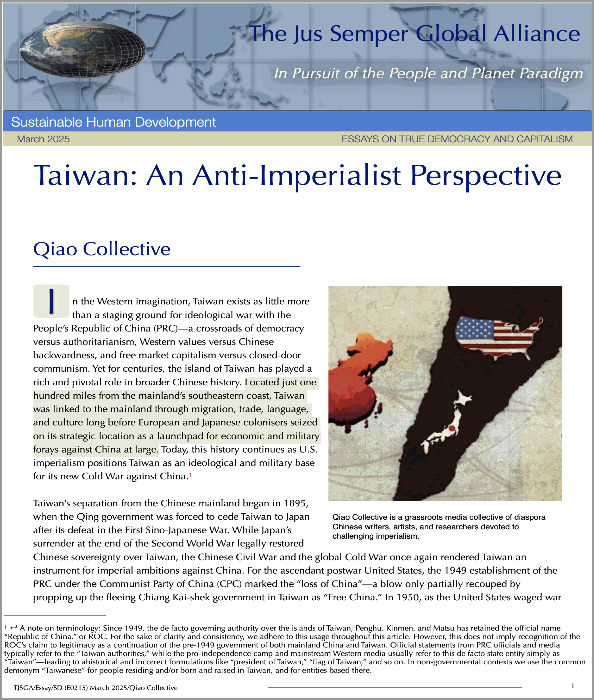Labour-Value Commodity Chains
—The Hidden Abode of Global Production
Intan Suwandi
As in V. I. Lenin’s conceptualisation, imperialism can be broadly defined as the complex intermingling of economic and political interests, related to the efforts of large capital to control economic territory. Imperialism has several interrelated aspects: (1) geopolitical (including military) struggle by nation-states for positions within the international hierarchy of the system, encompassing the control of colonies or neo-colonies, (2) dispossession of petty producers outside of capitalist production, and (3) global exploitation (along with expropriation—or appropriation without an equivalent) of labour in capitalist production, particularly under the domination of multinational firms emanating primarily from the core of the system. This work focuses almost entirely on the third aspect, without in any way denying the significance of the other two. At issue is the extraction (or drain) of surplus from the poor countries by the rich countries and/or their corporations. I argue that one way to understand the persistent imperialist characteristics of the world economy is through examining the exploitation that occurs in what Karl Marx calls the hidden abode of production—which, in the era of global commodity chains, is located in the global South. Although production has shifted to the South, imperialist relations of exchange continue to prevail, precisely the class struggles central to it without focusing on the due to the fact that the difference in wages between issue of exploitation, analysed through the labour theory the North and South is greater than the difference in of value. This remains equally true when examining the productivity. As Tony Norfield argues in The City, economy on a global level.imperialism in the present stage of capitalist development has its primary basis in the inescapable reality that a few major corporations from a small number of countries dominate the world market, world finance, and the global structure of production.
For a full read of this brief, click here or on the picture to download the pdf file. |







